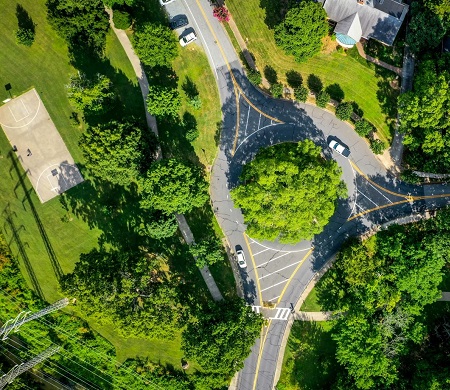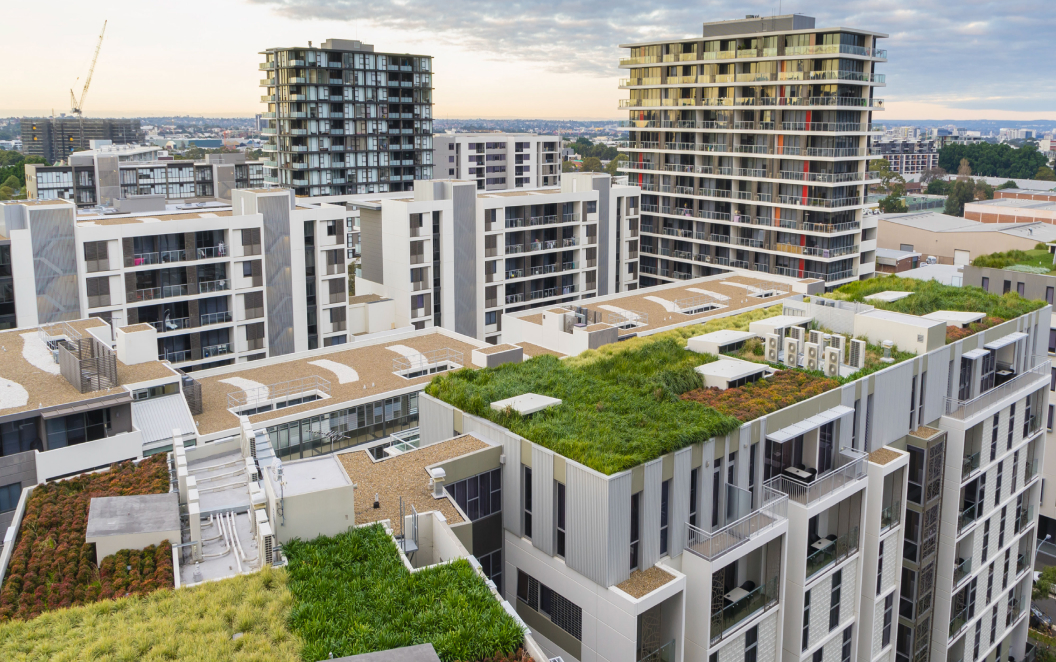En la historia de la humanidad las ciudades han ocupado un lugar central y tanto en la Antigüedad clásica, como en los tiempos de esplendor de Roma o durante la modernidad y el Renacimiento, se han revelado como verdaderos centros de poder político, económico, social y cultural.
Pero nunca tuvieron tanta relevancia como en la actualidad. Podríamos decir que estamos viviendo en la era de las ciudades. Para ofrecer tan sólo un ejemplo de una región del planeta, en América Latina y el Caribe, el 82% de su entera población vive en entornos urbanos y más de un tercio de esta porción vive en grandes ciudades de más de 1.000.000 de habitantes.
Y, el incremento de la población en las ciudades latinoamericanas se ha producido rápidamente en los últimos decenios. En la década del ’70 del siglo pasado, la concentración de la población citadina alcanzaba el 56,7% mientras que para el año 2.020 el porcentaje crecía hasta el 81,5%, según un relevamiento realizado por investigadores de la Universidad de los Andes de Colombia.
Ese marco de rápida urbanización torna relevante el undécimo Objetivo de Desarrollo Sostenible (ODS) establecido por las Naciones Unidas en 2015 que reza, “Lograr que las ciudades y los asentamientos humanos sean inclusivos, seguros, resilientes y sostenibles. De aquí a 2030, asegurar el acceso de todas las personas a viviendas y servicios básicos adecuados, seguros y asequibles y mejorar los barrios marginales”.
Estos ODS han sido acordados por 193 países y sus 17 puntos representan una hoja de ruta precisa para mejorar la calidad de vida de la Humanidad hacia el año 2050.
Durante la reciente Conferencia de Naciones Unidas sobre Cambio Climático 2021, realizada en la ciudad de Glasgow, Escocia, se analizó el “Plan Ciudades 2.050” para avanzar en las variables que se deben implementar de forma inmediata, pero también, en el mediano y largo plazo para cumplir con la Agenda 2.030 y los 17 ODS y llegar al 2.050 con ciudades sostenibles incorporando los procesos de construcción que logren eficiencia energética e hídrica, mejoren la gestión de residuos y paute nuevos sistemas constructivos que incluyan la reedificación de muchas zonas y barrios para crear urbes más verdes e inclusivas.
Por todo ello, que las ciudades se nutran de energía limpia, es uno de los principales proyectos de los expertos que se reunieron en la COP 26 en la ciudad del Reino Unido.
La representante de Chile en la conferencia, Margarita Ducci, se mostró esperanzada y confiada para alcanzar los objetivos en el futuro próximo, “Hoy, en medio de la crisis sanitaria, económica y social, vemos con esperanza que una parte importante de los ciudadanos han reflexionado respecto a su modo de vida, transformando sus hábitos en función de contribuir a un entorno social y medioambiental más sano. Por supuesto que esa sensibilización debe amplificarse a través de la educación, e incluir a toda la comunidad. Para ello se requiere un transporte público de alta calidad, gran cobertura, seguridad y eficiencia. El circular en bicicleta, el reutilizar y reciclar, el elegir un producto que se adecue a conceptos como su medición de huella de carbono, evitar la contaminación del agua y el aire, son solo algunos aspectos que nos permiten evolucionar, en el diario vivir. Siendo optimistas, si algo bueno ha traído la pandemia, es abrir nuestra mente a nuevas maneras de realizar nuestra vida diaria, lo que tiene un gran impacto en las ciudades: el teletrabajo, y la flexibilidad que probó ser eficiente, que ha permitido una reducción en la movilidad de las personas y del uso del transporte; la manera de comprar; la necesidad de mayor cantidad de espacios públicos de calidad, y la nueva forma de usarlos”.


El concepto de ciudad sostenible implica, para muchos analistas, que las urbes se conviertan en resilientes a los impactos adversos del cambio climático, que pueda identificar y reducir las vulnerabilidades de sus habitantes e incrementar la capacidad adaptativa. Al tiempo que debe estar preparada para gestionar posibles escenarios de desastres naturales.
En suma, una ciudad que reduce el impacto ambiental de las actividades de su población y promueve modalidades de consumo y producción sostenibles y acordes con sus propias condiciones geográficas y culturales.
Para lograrlo se requiere aumentar la urbanización inclusiva y la capacidad para la planificación. Una cuestión central según numerosos funcionarios de Naciones Unidas.
En un documento publicado por la ONU se afirma, “…una urbanización planificada contribuye a una alta productividad, innovación, pleno empleo, reducción de desastres ambientales y uso sostenible de la tierra y de los recursos durante el desarrollo urbano”.
Algunos analistas sostienen que la participación ciudadana es otro de los motores del cambio. Se debe apoyar la gestión participativa de los habitantes de cada zona urbana en todos los países comprometidos con el cambio.
Para el arquitecto uruguayo Martín Gómez, “las ciudades de este siglo deben incorporar el concepto de los 15 minutos. Esto es, ciudades policéntricas donde estamos a menos de 15 minutos de todas nuestras necesidades, trabajo, estudio, esparcimiento social y espacios públicos. Es inaudito, desde un punto de vista sustentable, que la gente de una ciudad viaje más de una hora en transporte público para ir a trabajar”.
Desde luego, que otro aspecto central de las ciudades sostenibles es su composición mixta. O sea, urbes con arquitectura que no desdeñe los espacios verdes. Que la naturaleza se encuentre presente en los diseños y tome un rol protagónico. Se trata de hallar una sinergia entre lo artificial y lo natural.
Es claro que para lograr estos ambiciosos proyectos de cambio se necesita de la iniciativa privada en conjunto de la pública.
Las administraciones gubernamentales no sólo gestionan herramientas financieras para promover inversiones sino que son las que aprueban los proyectos de construcción y urbanización por lo que sus funcionarios deben estar alineados con los objetivos de tener ciudades sustentables.
La consultora Arcadis elaboró un ranking de ciudades sostenibles que antes de la pandemia de coronavirus ubicó a Londres en la primera posición seguida de Estocolmo, Edimburgo, Singapur y Viena.

Según la ONG Intermón Oxfam, ciudad sostenible es aquella “que ofrece calidad de vida a sus habitantes sin poner en riesgo los recursos, ya que vela también por el bienestar de la humanidad futura y procura la justicia social”.
Londres se ha convertido en un paradigma de ciudad sostenible. En parte por el compromiso asumido por sus ciudadanos y funcionarios de hacer de Londres para este decenio, el mejor lugar en el que se pueda trabajar, vivir, jugar, estudiar, invertir y comerciar. Para ello, se despliega la mejor infraestructura necesaria para satisfacer las necesidades enumeradas.
Sin embargo, algunos analistas advierten, “Londres se está convirtiendo en víctima de su propio éxito porque el crecimiento de su población está degradando la tasa de inversión en infraestructura que necesita para permanecer en el podio junto a Frankfurt”.
Desde hace 25 años, la ciudad portuaria alemana, ha trabajado para ser la más sustentable. Creó su propia agencia de energía y es miembro fundador de la Alianza Climática de Europa Ciudades por la cual se ha comprometido a reducir continuamente sus emisiones de dióxido de carbono (CO2).
Y, está cumpliendo sus objetivos. Reduce su polución en carbono un 10% cada cinco años lo que significará un recorte del 50% total para el año 2030 de continuar con esta política.
Además, el nuevo plan maestro de Frankfurt, “100% Protección del clima”, va más allá. Para 2050, 100% de la energía de Frankfurt se originará por recursos renovables. Frankfurt se ha revelado como el faro a seguir en la era de las ciudades sustentables.
Para John Batter, director de Global Cities Arcadis, “nuestro mundo está cambiando a un ritmo más rápido que nunca y la ciudades son las grandes protagonistas”.
Una vez más, al igual que en la Antigüedad, el Renacimiento, la Modernidad y durante la Revolución Industrial, las urbes son el escenario más importante de la Humanidad.
Muchos son los desafíos, algunos urgentes, que deberán resolver sus habitantes pero para Batter se trata de una nueva oportunidad, “Nos enfrentamos continuamente a grandes chances y desafíos que son brillantemente disfrazados de problemas irresolubles. A medida que nuestro mundo se vuelve cada vez más dependiente de su entorno urbano, es hora que los líderes de las ciudades, evalúen sus prioridades y caminos hacia la sustentabilidad, por el bien de todos”.





